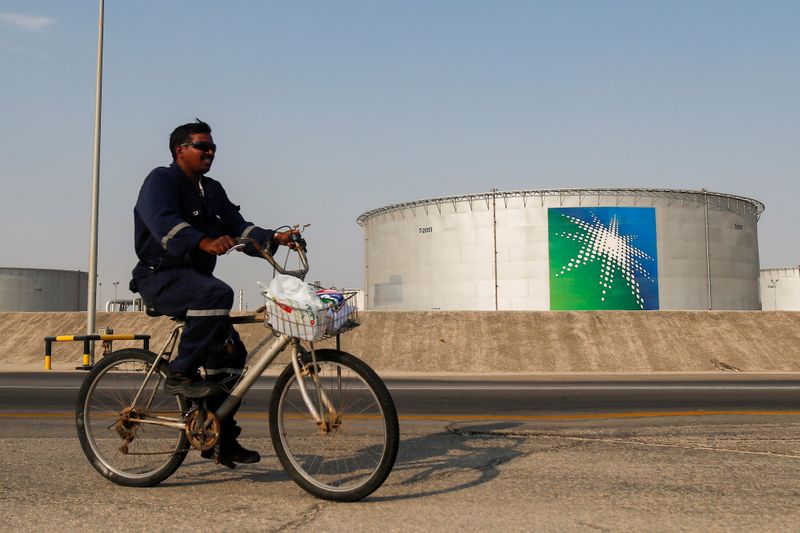By Alex Lawler
LONDON (Reuters) - OPEC oil output rose in March from the lowest in more than a decade last month as Saudi Arabia boosted output following the collapse of an OPEC-led supply pact, offsetting further declines in Libya, Iran and Venezuela.
On average, the 13-member Organization of the Petroleum Exporting Countries pumped 27.93 million barrels per day (bpd) last month, according to the survey, up 90,000 bpd from February's figure, which was unrevised.
A supply pact by OPEC and other producers, known as OPEC+, collapsed on March 6, hastening a drop in prices that were already falling due to the coronavirus outbreak. Brent crude (LCOc1) has plunged below $22 a barrel, the lowest since 2002.
While Saudi Arabia plans to boost supply following the OPEC+ deal collapse, OPEC output has not changed much yet because export deals for March production were already in place, said Petro-Logistics, a firm that tracks oil shipments.
"OPEC supply in March is broadly unchanged versus February, hovering at record lows," Petro-Logistics chief executive Daniel Gerber told Reuters. "Allocations for March barrels were locked in by the time the OPEC+ agreement collapsed on March 6."
"This may be the calm before the storm as many OPEC countries have announced a maximisation of their supply and exports in April. Early signs show export rates from Saudi Arabia, UAE and Kuwait starting to ramp up."
OPEC, Russia and other producers had a deal to curb output by 1.7 million bpd until March 31 to support prices.
The 10 OPEC members bound by the agreement still exceeded the pledged cuts in March, the survey found. Compliance was 106% in March, a decline from 128% in February.
Production next month is expected to rise further. Saudi Arabia is reducing refinery operations in April to boost export potential and, an official said, plans to ship 10.6 million bpd in May.
IRAN AND CORONAVIRUS
February's output was the lowest by OPEC since at least 2009, the year in which the group implemented its biggest-ever supply cut due to the financial crisis, excluding membership changes since then, according to Reuters survey records.
Among those pumping more, Saudi Arabia boosted output by 100,000 bpd in March, even though some buyers asked to cancel cargoes because of reduced demand, industry sources said.
The UAE is also ramping up production, sources said, while Nigeria and Iraq, both laggards in making cuts in 2019, also raised output slightly due to higher exports.
Venezuela, Iran and Libya all reduced output in March. All three were exempt from voluntary OPEC curbs because of U.S. sanctions or internal issues limiting production.
Iran is also seeing a drop in gasoline use because of the coronavirus outbreak, said analyst Sara Vakhshouri of SVB Energy International, compounding the impact of sanctions on supply.
"Iran's oil production has dropped to below 2 million bpd," she said. The survey average put Iranian output at 2.02 million bpd, down 70,000 bpd.
Venezuela, contending with both U.S. sanctions and a long-term decline in output, posted another drop in production and exports in March.
Oil output in Libya has plunged since Jan. 18 due to a blockade of ports and fields by groups loyal to eastern-based commander Khalifa Haftar. Production fell by another 45,000 bpd in March, the survey found.

The Reuters survey aims to track supply to the market and is based on shipping data provided by external sources, Refinitiv Eikon flows data and information provided by sources at oil companies, OPEC and consultants.